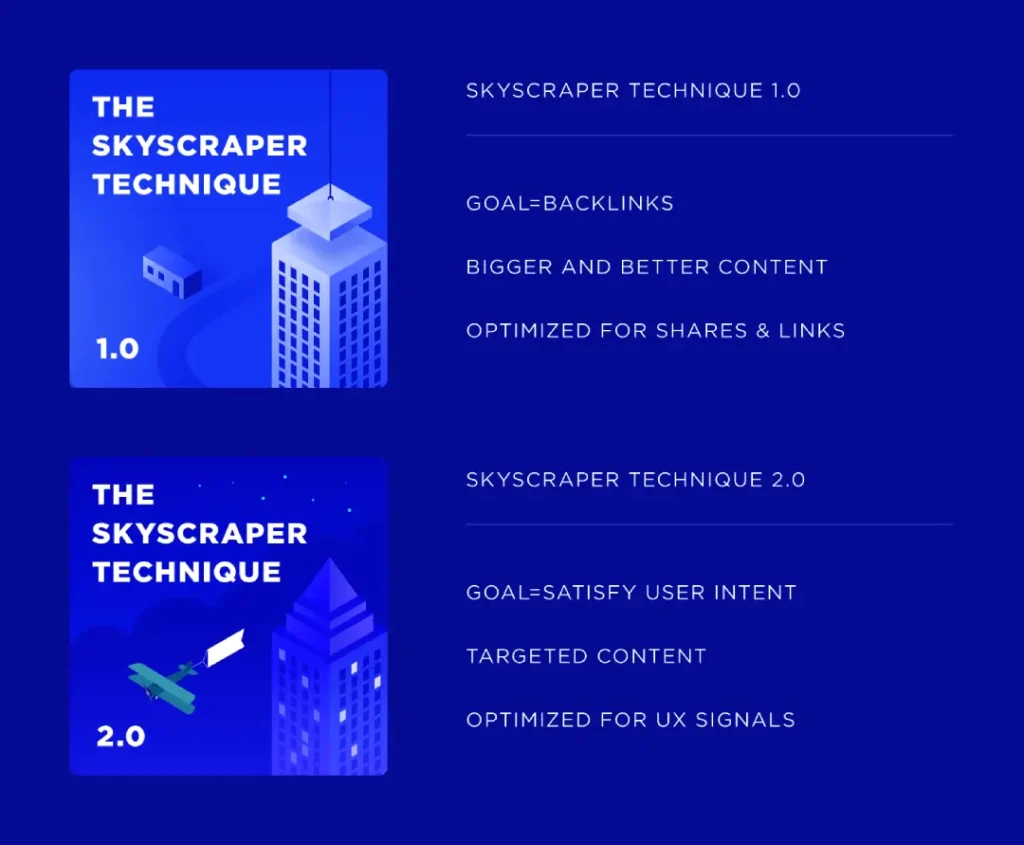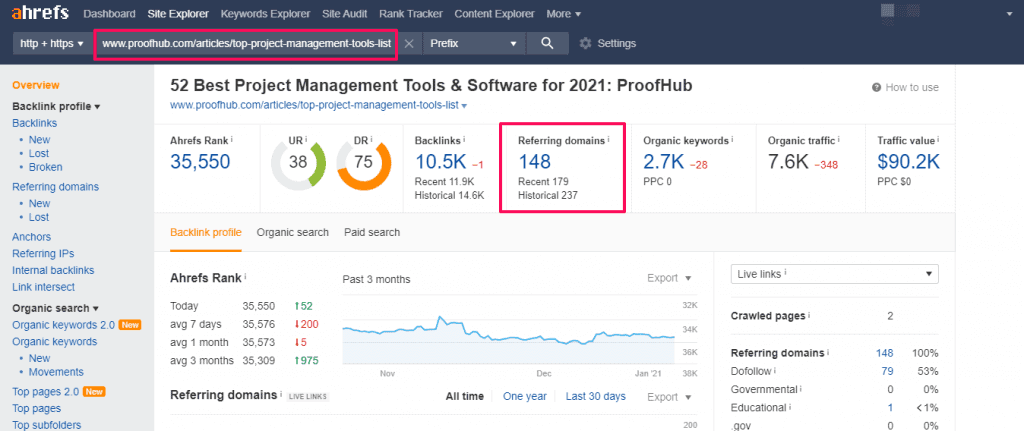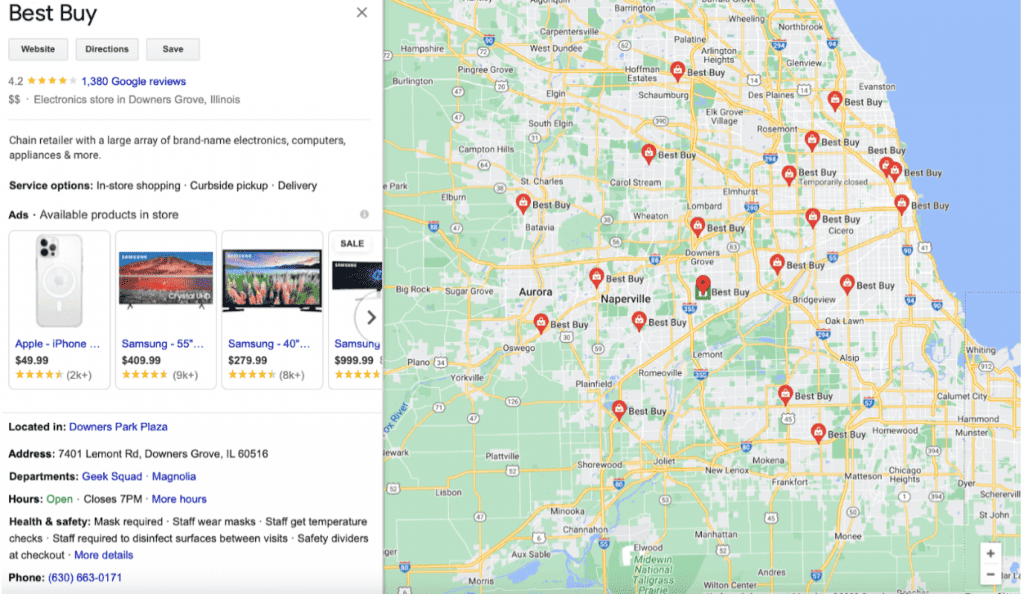15 Top Link-Building Strategies That Actually Work
Links are votes of confidence from the internet.
Getting them isn’t about “diligence”; it’s about having something worth linking to.
The top link-building strategies aren’t about begging for links; they are systems for creating linkable assets that attract authority and drive revenue.
Forget chasing random backlinks.
This is a breakdown of 15 operational plays for earning the high-quality, relevant links that signal to Google you are the definitive answer in your market.
- Link-building is crucial for SEO, impacting page rankings through the quantity and quality of backlinks.
- Effective strategies include guest posting, ego baiting, and the Skyscraper technique for acquiring quality links.
- Creating valuable resources and engaging content helps attract natural backlinks over time.
- Link reclamation and competitive analysis can uncover new opportunities to enhance your link profile.
Top Link-Building Strategies
1. Guest Posting

This one has been around forever, and for a good reason – it works! Guest blogging lets you leverage someone else’s established audience to get quality links.
Here’s how it works: You pitch blog owners in your industry and offer to create free content for their sites. In exchange, you can include a link or two to your website.
The key is to target reputable, relevant sites and create genuinely excellent content that their readers will love. Avoid anything spammy or low quality – it’s just not worth it.
Finding guest posting opportunities does take work. Start by making a list of sites that accept guest posts. Tools like Google search operators and X (Twitter) can help uncover them faster.
When pitching a site, personalise your email and highlight why your audience would appreciate your proposed article topic.
If you want professional help that actually delivers results, the best guest posting service we’ve found is Rhino Rank.
They specialise in connecting you with high-authority sites, crafting tailored outreach campaigns, and ensuring your content gets published where it will have the most impact.
Guest posting isn’t a get-links-quick scheme. But by consistently creating fantastic content on authoritative sites, you’ll build a steady stream of backlinks, boost your visibility, and gain new customers!
2. Ego Baiting
This shows that people (even seasoned bloggers and journalists) love being recognised and praised. Ego-baiting involves creating content that complements or lists influential people in your industry.
The psychology here is that when you give someone their well-deserved kudos, they’re likely to share and link to the content on their platforms.
There are various forms ego baiting can take, such as:
- Roundup posts listing top influencers, experts or brands in a niche
- Expert interviews or profiles highlighting someone’s backstory/expertise
- “Best of” lists featuring top people, products, services, etc, for example, listicles like Link building services to watch in 2024.
For example, a marketing agency could create “10 Social Media Experts Every Marketer Should Follow.” The featured experts will likely share and link to it from their sites/social channels.
To make ego-baiting work, thoroughly research your niche and target people with absolute authority/influence and decent followings. Reach out beforehand to get their involvement. And make sure your content is precious and shines a positive light.
3. The Skyscraper Technique

This ingenious strategy comes from Brian Dean at Backlinko. It involves finding link-worthy content that’s already popular and creating something way better to attract more links.
The steps are:
- Find content with tons of backlinks in your niche
- Analyse what makes that content link-worthy
- Create an amazingly better version
- Promote that new resource to the same people who were linked to the older versions
Dean found middling success with this technique until he focused on creating content that was not just better, but mind-blowingly, significantly better than the competition. It’s like ten times better.
For example, you could find a famous industry study from a few years ago, replicate it with up-to-date info, and pack it with more data, analysis, visuals and insights. When something is genuinely authoritative and valuable, people will want to link to it.
Of course, creating that level of 10X content takes considerable effort. You need researcher skills, writing chops, and design talent…but if you have those assets, the Skyscraper Technique can drive boatloads of authoritative links.
4. Link Reclamation
This is one of the more straightforward link-building methods. Ever notice how sites can end up with broken links pointing to pages that no longer exist? Link reclamation involves finding those broken links on quality sites and negotiating to replace them with links to your content.
There are a few steps:
- Use a tool like Ahrefs to audit websites in your niche and identify pages with non-working outbound links.
- Go through and weed out the low-quality sites.
- For quality sites with broken links, find relevant content on your site that could replace the broken link.
- Reach out politely to the site owner, pointing out the broken link and suggesting a replacement for your resource.
If you target authoritative sites with good domain authority, fixing just a few broken links monthly can add up to a significant SEO boost over time.
Be reasonable and non-spammy with your outreach. Offer a genuine value exchange by replacing low-quality broken links with higher-quality content.
Link Rescue & Recovery
This is a related technique where you look for link opportunities from pages that no longer exist on other websites.
Say a site in your industry went under and deleted their blog posts – all those backlinks are now “dead” links pointing to nowhere. You can use tools to find pages linking to those now-defunct resources, then ask those site owners to redirect their links to a relevant page.
Again, the key is being helpful, not spammy! High-quality link recovery can breathe new life into lost links.
5. Resource Link Building

This technique involves creating precious resources like guides, tools, data studies, etc. and getting other sites to link to them naturally.
Why would a site want to link out to your stuff? Because it creates an excellent experience for their audience while positioning themselves as a credible, trustworthy source.
Successful examples include:
- Detailed, comprehensive guides on topics people search for
- Free tools, calculators, and generator tools
- Original data, research studies and visualisations
- FAQ/glossary knowledge bases
- Downloadable templates, swipe files, worksheets
You must invest significant time and effort in creating something beneficial and hard to find elsewhere on the web. The quality must be high enough that other web admins want their visitors to benefit.
One site that nails this is Venngage, which offers a free online business resources hub with customisable templates, report examples, chart data and more. Site owners link to these goodies because they help their readers.
Once created, you must actively promote your resources to get that first crucial round of links. After that, a phenomenal resource can earn organic links for years as word spreads.
Original Data Studies
These are some of the most potent forms of resource link builders. Who doesn’t love trustworthy, original research and data visualisations? Press, bloggers and educational sites frequently link to credible studies.
Examples include annual industry surveys, data-driven guides, statistical analyses, rankings, etc. Funding a study can earn dozens of authoritative backlinks if you have strong research capabilities.
6. Link Gap Analysis
This advanced strategy helps you find promising link opportunities that others are missing. It involves reverse engineering your competitor’s backlinks to find their most valuable links and replicating them yourself.
Let’s say one site in your niche has way more organic traffic and ranks higher than you. You can analyse their backlink profile using tools like Open Site Explorer or Link Explorer to identify their most authoritative dofollow links.
Then, cross-reference that against your site’s links to detect a “link gap” – high-value websites linking to them but not to you. Armed with that list, you can create similar content by asking for a link.
This tactic borrows heavily from the “Skyscraper Technique” concept – you’re not just copying their links but finding ways to create something even better that deserves the link more.
Analysing competitors’ backlink data and finding angles to earn the same links takes work. But it’s a very strategic way to level up your link profile.
7. Branded Campaigns

Most link-building strategies focus on creating content that attracts links. But what if you could flip it and design shareable campaigns to generate links?
Known as “link bait campaigns,” these involve creating fun, engaging content experiences, tools or ideas to get attention and earn links.
Some link bait examples that have worked well:
- Powerful free tools, calculators or widgets that get embedded/linked on blogs
- Interactive data visualisations, videos or games that publishers want to share
- Bold predictions, claims or controversial statements that spark buzz
- Funny memes, images or videos that appeal to social sharing
- Polls or surveys piggybacking on trending topics/events
- Stunts, contests or viral social media campaigns
8. Broken Link Building
This is a classic link-building tactic that never goes out of style. It involves finding broken links on quality websites and offering up your resource as a replacement.
The steps are:
- Use tools to scan domains in your niche for non-working outbound links
- Identify the broken pages that are still getting traffic and seem worthwhile to replace
- Create a new, high-quality piece of content that fits the context of that broken link
- Reach out to the site owner, point out their broken link, and politely suggest your content as a replacement
When done right, it’s a true win-win. The site owner can fix their broken link and improve their user experience. And you earn a relevant backlink from an authoritative domain.
Personalise each email to maximise your success rate and emphasise how your content improves on the missing resource. Show exactly how it would provide more value to their readers.
This tactic does require effort to find and fix broken links one by one. However, even acquiring a few new monthly backlinks can have a significant SEO impact over time.
9. Link Intersect

This is a more advanced strategy, but it’s super insightful. Link Intersect allows you to reverse-engineer the familiar backlink sources that all of our competitors have.
Here’s how it works:
Use Ahrefs or SEMrush to pull the complete backlink profiles of your top 5-10 competitors. You’ll get a massive list of every domain linking to each of their sites.
Then, use filters to see which domains commonly link to multiple competitors. These represent the highest value, low-hanging fruit link opportunities in your space.
Why? Well-established sites link out to the best available resources for any given topic. If trusted domains consistently link to your competitors’ content, their content is worth checking out.
Your next step is to study your competitors’ linked content and learn how to earn those links yourself. Sometimes, it may be as simple as creating a similar resource and asking for the link. Others may require a valid “Skyscraper Technique” level upgrade.
Either way, link intersect cuts through the clutter, showing you the highest potential backlink targets to prioritise.
10. Link Roundups
Link roundups offer an easy way to find relevant link opportunities and inform people about your great content.
The premise is straightforward: Most content creators constantly look for sources to include in link roundup posts. Weekly or monthly posts collect the best new sites, articles, tools and other content to share with their audience.
How can you get featured in these roundups?
First, use search strings like:
"keyword" + link roundup "keyword" + blogroll inurl:linksThis will surface blogs in your niche that publish periodic roundups. Once you have a solid list, create some kick-ass content or a resource worth sharing.
Then, email each roundup curator a brief intro and link to what you created. If it’s high-quality and relevant to their audience, they will likely include it for the value it adds to their post.
Link roundups may earn you less powerful backlinks from significant authority sites. However, they consistently allow you to acquire relevant blog links with solid domain authority, like those from a link-building company in the UK. Those add up over time!
11. Local Link Building

Local link-building must be part of your strategy if your business serves a specific geographic area. It helps reinforce your local relevance in Google’s algorithm.
Beyond just getting found locally, acquiring links from other local sites creates brand awareness within your community.
Some local link-building tactics:
- Create profiles and get listed in high-quality local business directories and citations
- Sponsor or get involved with local schools, nonprofit organisations, sports teams, events, etc.
- Partner with complementary local businesses for cross-promotions
- Get listed and write guest posts on local community blogs
- Create location-specific resources (neighbourhood guides, moving tips for the area, etc.)
The key to local link building is to consider getting your business’s name out there in the real world. Participate in your community both on and offline. As people discover your brand, they’ll link to you from their local sites and blogs.
Local Review Sites
Look at review sites! Create listings on localised review portals like Yelp, TripAdvisor, Facebook, Foursquare and others. These sites prioritise local SEO factors and rank well for local queries.
Local Media Outreach
Local newspapers, TV stations, radio shows, blogs and event calendars can be excellent sources of authoritative local links. Follow them and look for opportunities to contribute quotes, get mentioned or sponsor local interest stories.
12. Create Linkable Assets
We’ve touched on this a few times, creating exceptional resources and assets that other websites want to link to. It’s one of the most sustainable link-building models.
What qualifies as a “linkable asset”? It must be super high quality, unique, and offer immense value that few others provide. We’re talking things like:
- Comprehensive industry studies and original data
- In-depth expert guides and educational resources
- Free tools, models, templates, and downloadables
- Visual assets like infographics, charts, images, videos, etc.
Bloggers, journalists, educators, and others love to reference and link back to these assets. A data-driven study on an emerging industry trend? That’ll earn a boatload of backlinks from articles referring to it as a source.
To create linkable assets, devote real time and resources. Don’t go for a quick turnaround content piece. Take months, if needed, to produce something truly exceptional that will stand out.
Go Visual & Interactive
People are drawn to visual, interactive experiences, so infographics and multimedia attract links. If you lack data or writing skills, consider crafting visual linkable assets like:
- Interactive calculators and tools
- Games, quizzes and assessments
- Charts, graphs, maps and other visualisations
- Animated videos and motion graphics
- Original illustrations, art and photography
Repurpose Your Content
If creating 100% new linkable assets sounds daunting, consider repurposing and expanding upon your best content. Look for opportunities to turn great blog posts into epic guides, webinars into courses, or data into visual stories.
13. PR & Brand Mentions

Part of an effective link strategy includes leveraging public relations outreach for brand awareness and mentions. While not all PR links will be followed, the increased brand visibility and referral traffic alone provide colossal value.
A few proven PR link-building angles:
- Find ways to get included on lists, featured in articles, or quoted as an expert
- Sponsor events, surveys or research studies that journalists cover
- Newsjack trends and stories with relevant take, positioning your brand
- Launch creative campaigns that spark buzz on social media and news outlets
- Optimise your presence on trusted review sites like Yelp and Google
Any time you earn exposure, a brand mention or a reference online, you can respectfully inquire about turning that into a backlink.
A word of caution – be careful with “link requests” and don’t come across as demanding or entitled. No one owes you a backlink, so provide value first.
14. Webinars & Virtual Events
Hosting webinars or virtual events can be a stellar link-building opportunity. Not only do the live broadcasts get linked to, but the recordings and materials often earn backlinks.
For maximum results, offer something education-rich and valuable that attendees want to share and reference. Do keyword research to choose topics that searchers wish to.
In the lead-up, promote your event to drum up attendance and interest. Reach out to bloggers offering free speaker slots/interviews in exchange for promoting it to their audience.
Link to recommended resources and your site content during the webinar or virtual conference. After the fact, repurpose the recordings and materials into linkable assets to wring out even more backlinks.
B2B brands can be wildly successful at this approach, as webinar links tend to cluster in the types of business directories and industry sites that appeal to their audiences.
Present on Others’ Webinars
As a scrappy alternative, get yourself booked as an expert guest presenter on webinars and virtual summits within your industry. While not as high-leverage, you’ll often earn backlinks from the event hosts in their promotions.
15. Be a Source

Finally, one of the best long-term link-building tactics is establishing yourself or your company as a credible, go-to source that journalists want to tap into.
Reporters always seek experts to cite for quotes, data, or other insights when crafting stories. If you position yourself as an authority, they’ll reference you and link back to your site.
Some ideas to put yourself on journalists’ radars:
- Join communities like HARO and ProfNet, which connect reporters with sources
- Offer to write guest posts, expert interviews or columns for significant industry publications
- Reach out directly with pitches when you have unique data, surveys or stories to share
- Monitor social media for reporters seeking sources on topics you can support
- Consistently create authoritative content that journalists will want to reference
- Cultivate relationships by sharing others’ work and being responsive when contacted
The more visible you become as an expert voice, the more journalists naturally cite and link to you over time.
Earning this organic link takes time and effort. However, it helps build your site’s credibility and acquire highly authoritative backlinks from primary news sources and publications.
Wrapping Up: A Balanced Link Building Mix
As you can see, there’s no silver bullet for link building. The best approach combines various tactics to steadily grow your earnings from quality backlinks.
Start by knocking out easier wins like guest posting and broken link building. Build some linkable assets your audience craves. Then, layer in more advanced techniques like skyscraper content and competitive link analysis.
At the core is creating handy stuff that benefits readers and naturally attracts links. But don’t just wait – pair that with consistent, ethical outreach and promoting your best work.
Over months and years of relentlessly implementing a balanced strategy, your website will acquire coveted backlinks that boost search visibility and organic traffic.
Link building has no shortcuts. It takes commitment, hard work and patience. However, it remains one of the highest-leverage SEO investments you can make for your website’s long-term success.
Link-Building FAQs
How many backlinks do I need to rank?
There is no set number, but the required links depend on your keywords’ competitiveness. Typically, higher-quality links from relevant sites would improve your ranking chances, so don’t aim for a specific figure; concentrate on developing a solid link profile over time.
Are paid links okay?
Paying outright for do-follow backlinks or participating in private link networks/schemes is against Google’s guidelines and can result in penalties being applied against you, so stay away from them! However, sponsored posts with no follow tags may still be acceptable if appropriately disclosed, but it’s better to tread cautiously here.
How do I find my competitors’ backlinks?
You can use Ahrefs, SEMrush, Majestic, and other similar tools that crawl the web to find all websites linked to a particular domain name (the site’s entire backlink profile). Then, you’ll have to analyse those links concerning your site.
What makes a high-quality backlink?
Relevance with your niche, authority & traffic of the linking site, followed/dofollow-edness, natural surrounding content vs site-wide links, anchor text using your keywords… all these factors should be considered when building high-quality backlinks – also ensure they’re not from bad neighbourhoods/networks!
How quickly will I see results from link building?
It can take months for new backlinks to get fully processed by Google and reflected in rankings, so stay consistent and don’t lose hope too early! Quality white hat link building should show compounding positive returns over time.
Do nofollow links help SEO?
Nofollow doesn’t directly pass PageRank value but contributes to overall positive ranking signals such as referral traffic, brand exposure, and credibility (showing Google that you’re an authority worth linking to). They are seen as a second-tier ranking factor.
What are Google’s penalties for unnatural links?
If a search engine detects that you’ve acquired backlinks through spammy actions like buying links or schemes, it could apply a manual action penalty against your website, such as lowering its rank or removing it from the index altogether. Always follow their guidelines.


Amazing